In the swim: Britain's best private swimming pools
As Britain goes through a blazing hot tail-end of summer, Christopher Woodward dives into the history of the swimming pool and relishes some lengths in the best private pools in the country. Photographs by Simon Buck and Millie Pilkington.
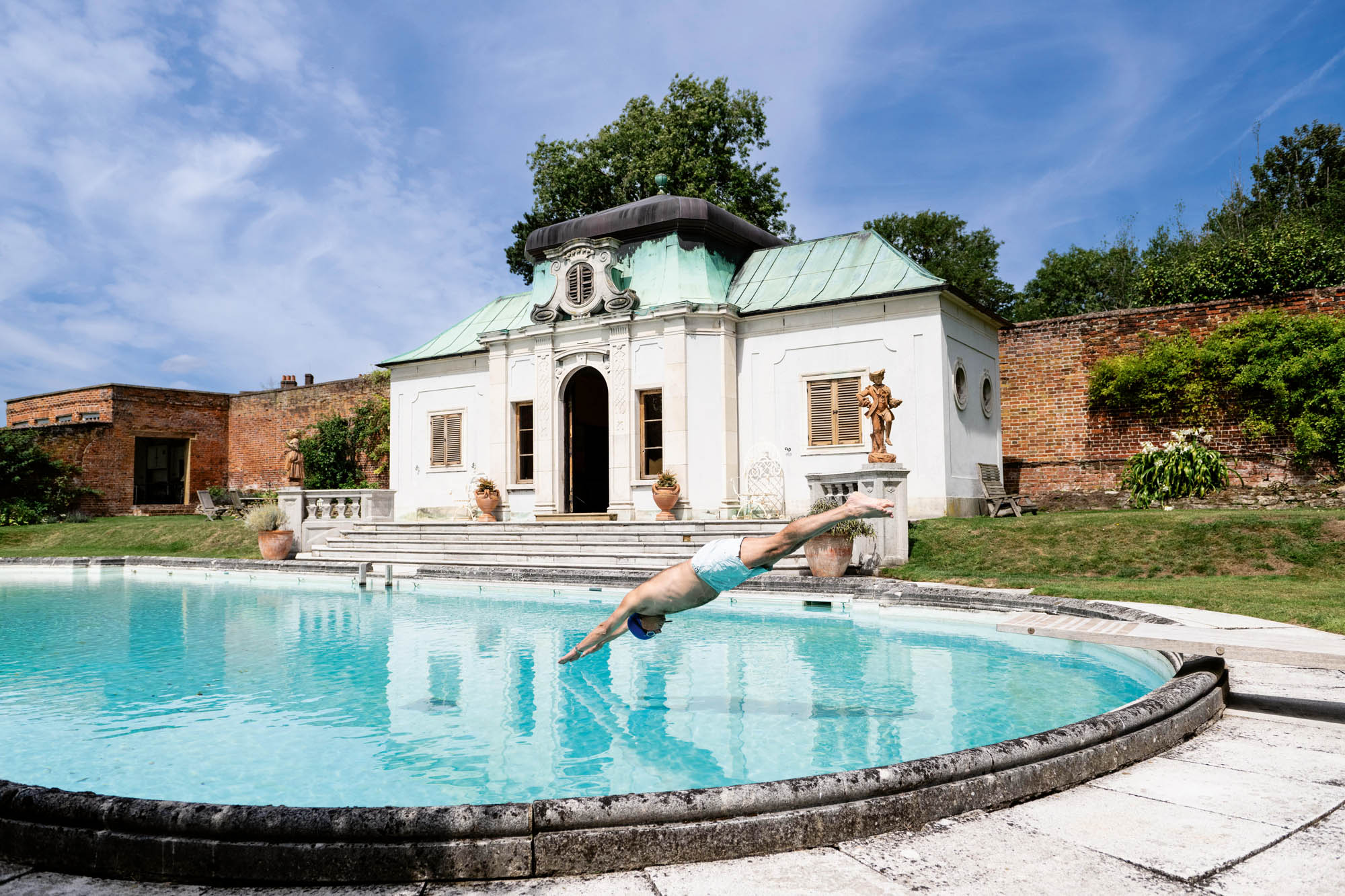

The 1930s ushered in the Golden Age of swimming in style. Swallow divers had captivated the Paris Olympics in 1924 and Olympians Johnny Weissmuller and Eleanor Holm thrilled in Billy Rose’s Aquacade at the New York World Fair in 1939. Here, London County Council leader Herbert Morrison declared the capital would be a ‘City of Lidos’. The first elasticated swimming costume was launched in 1934. It was a time, as Catherine Horwood wrote in her article Girls Who Arouse Dangerous Passions: Women and Bathing 1900–1939, when opposition to the display of female flesh was overcome by an understanding of the value of sunlight: tanning began in German health spas and, later, on the French Riviera.
I have swum in wild seas and freezing oceans — from the Arctic Circle to, most recently, the 50 miles from Newlyn to the island of Tresco, as well as in countless rivers, including the Thames from Oxford to London. But, in reaction to the current mania for wild swimming, with its muddy chatter of Thermos flasks, Birkenstocks and wellbeing, it seems time to rediscover an age when swimming was a more elegant affair.
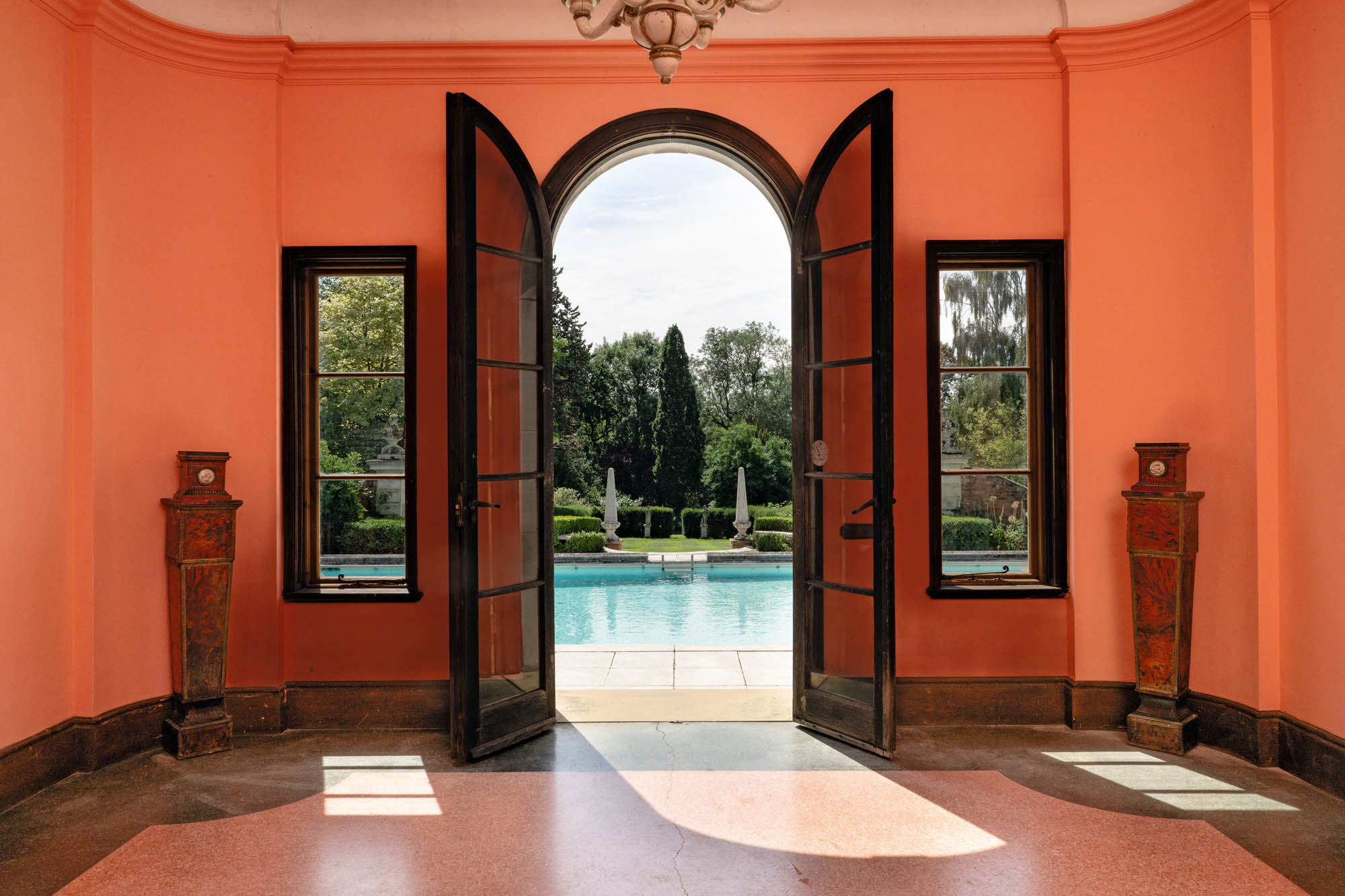
Chambers for bathing date back to the 18th century, with intact examples in the grotto at Stourhead in Wiltshire and next to the rill at Rousham in Oxfordshire. But bathing is not swimming. The first outdoor pool in which a swimmer could apply their strokes was commissioned in 1918 by politician, pilot and connoisseur Sir Philip Sassoon at Port Lympne in Kent as part of an extension that contemporaries noted for its Babylonian opulence. The first indoor pool was made for Australian-born mining magnate Sir Edmund Davis at Chilham Castle, Kent. Designed by Herbert Baker, the official listing entry records that it was modelled on the Baths of the Emperor Caligula.
Swimming pools were perceived by many of the traditional classes to be indulgent, foreign, even louche. When Nancy Astor’s sons asked for a swimming pool to be put in at Cliveden in Buckinghamshire, she is said to have replied: ‘No, no, it’s disgustin’. I don’t trust people in pools.’ (Her son, the 3rd Viscount, put in Cliveden’s pool in the 1950s.) The Uncle Matthew of Nancy Mitford’s The Pursuit of Love would have swum in a lake or a river. Sometimes garden features could be taken advantage of: the First World War hero and champion swimmer Gen Bernard Freyberg is said to have trained for a Channel attempt in the ornamental canal at Bodnant, Wales.
When the fashion for purpose-built swimming pools was introduced to Britain from Germany and America, one challenge was how to integrate a brash rectangle of water into an ornamental landscape. At Port Lympne, the pools were incorporated into a setpiece of balustraded terraces; at Buscot Park, Oxfordshire, inherited by the 2nd Baron Faringdon in 1934, a new pool was concealed within a new wing in the Classical style of the house designed by Geddes Hyslop.
Perhaps the prettiest and proudest of all the pools of the interwar period was commissioned by Henry Channon, born in Chicago in 1897 and nicknamed ‘Chips’ when an undergraduate at Oxford. In 1937, Channon and his wife, Lady Honor Guinness, daughter of the 2nd Earl of Iveagh, bought 18th-century Kelvedon Hall in Essex, close to his Parliamentary constituency of Southend-on-Sea. In November 1937, his diaries record signing the contract for the pool and pavilion at a cost of £2,864.
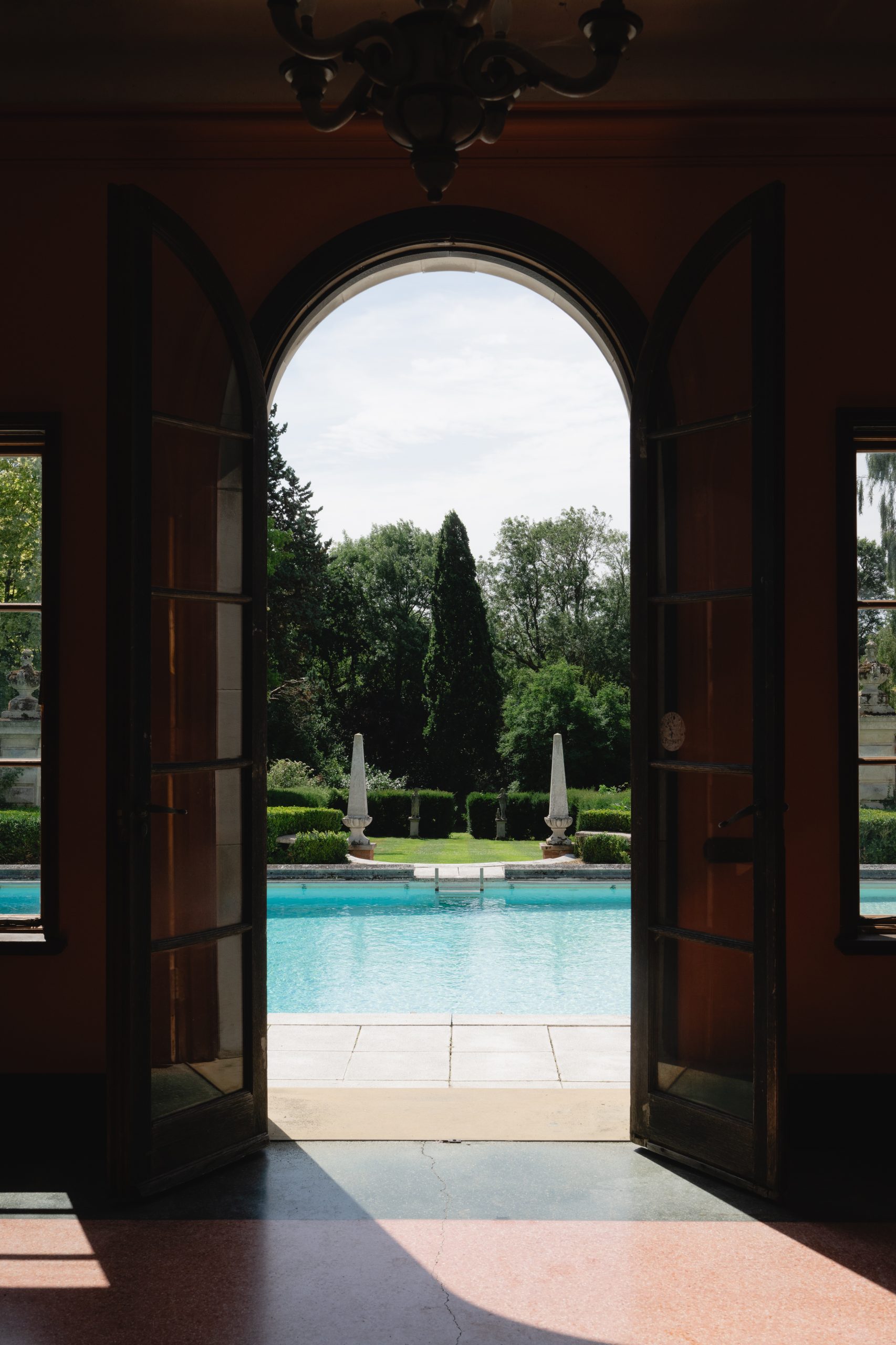
The architect was ‘the Austrian Kellner’. William (born Wilhelm) Kellner practised at No 107, Jermyn Street, London SW1, but has otherwise left no trace as an architect. However, he is surely the same Austrian-born William Kellner of Austria (1900–96) who, from 1940, worked as a draughtsman on Powell and Pressburger films, such as A Matter of Life and Death, and, in time, a leading Hollywood art director, nominated for two Oscars, including for Suddenly Last Summer in 1959.
Sign up for the Country Life Newsletter
Exquisite houses, the beauty of Nature, and how to get the most from your life, straight to your inbox.
Kellner’s Austrian nationality also explains the pavilion’s design: Channon’s favourite style was the Baroque of South Germany. It forms a pair to the dining room installed at No 5, Belgrave House, London SW1, which he and Lady Honor — a serious swimmer who advised on the design of the iconic pool at the Hotel Cipriani in Venice — bought in 1935. For the dining room, the interior designer, Stephan Boudin, was dispatched by Channon to study the Amalienburg, the shooting lodge built in the gardens of the Nymphenburg Palace in 1734–39 for Charles VII and celebrated for its mirrored dining room.
The other interiors at Belgrave Square were re-styled by the architects Gerald Wellesley and Trenwith Wills and the decorator Dolly Mann in English Regency Revival, as a deliberate foil to the climax of Boudin’s mirrored, silver-leaf and aquamarine dining room. At Kelvedon, Wellesley and Wills added entrance lodges in the same polite Classical style, so the Baroque swimming pool comes as a startling surprise. The oval was the characteristic shape of the Baroque interior, little used in Britain — it is the perfect shape for a pool.
On axis, steps flanked by terracotta statues of a gardener and his wife — from the Paris workshop of Louis Gossin (1840–1928), who specialised in garden figures in 18th-century style — lead to a room below the copper dome, with a coved ceiling, Rocaille mirror and Baroque statues in niches, the whole fitted out for entertaining. To each side are changing rooms for men and women, closer to dressing rooms in their elegance of finish, with towel rails in the form of Rococo pelmets. Originally, there was even a hotplate for warming up drinks in the ladies’ dressing room. Changing here certainly makes you feel like a film star.
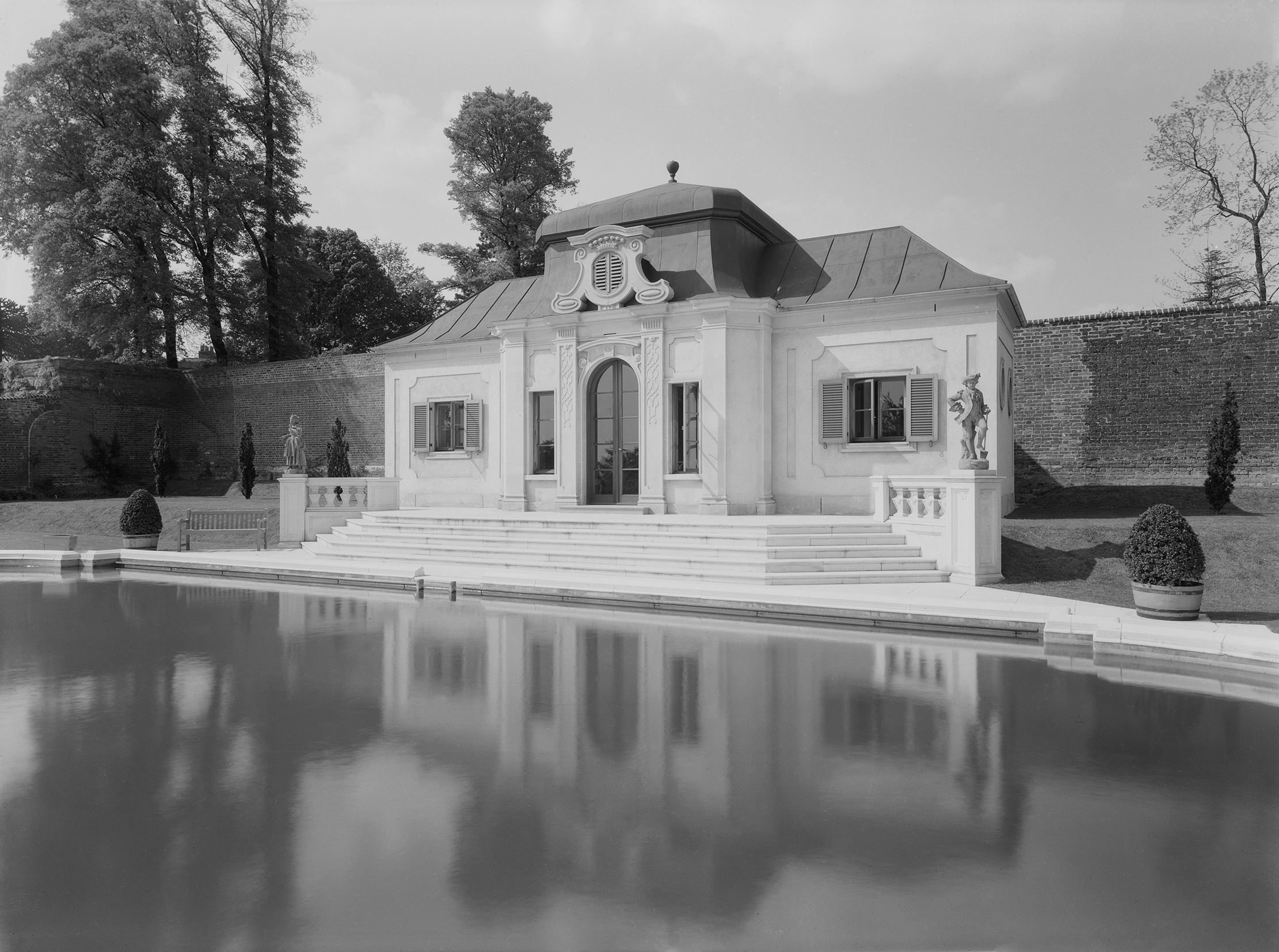
Channon was modern in lifestyle (‘I find that Benzedrine in the cocktails always makes a party go,’ he confided to his diary), but the pool pavilion is an escape to Arcadia, that far-away land of the eternal present. On September 17, 1939, real life intruded. Channon’s diary recorded: ‘A glorious day at Kelvedon where I bathed in the pool, and then in a bath towel rang up the FO to be told the grim news that the Russians had definitely invaded Poland.’
Taking the plunge, I found that the diving board (of teak, as are the steps and handrail) has a good strong bounce and, as Kellner’s drawings record, the underwater section is of a profile cleverly designed to minimise the slop of water. That smoothness set me up for a fast and arrogant swim.
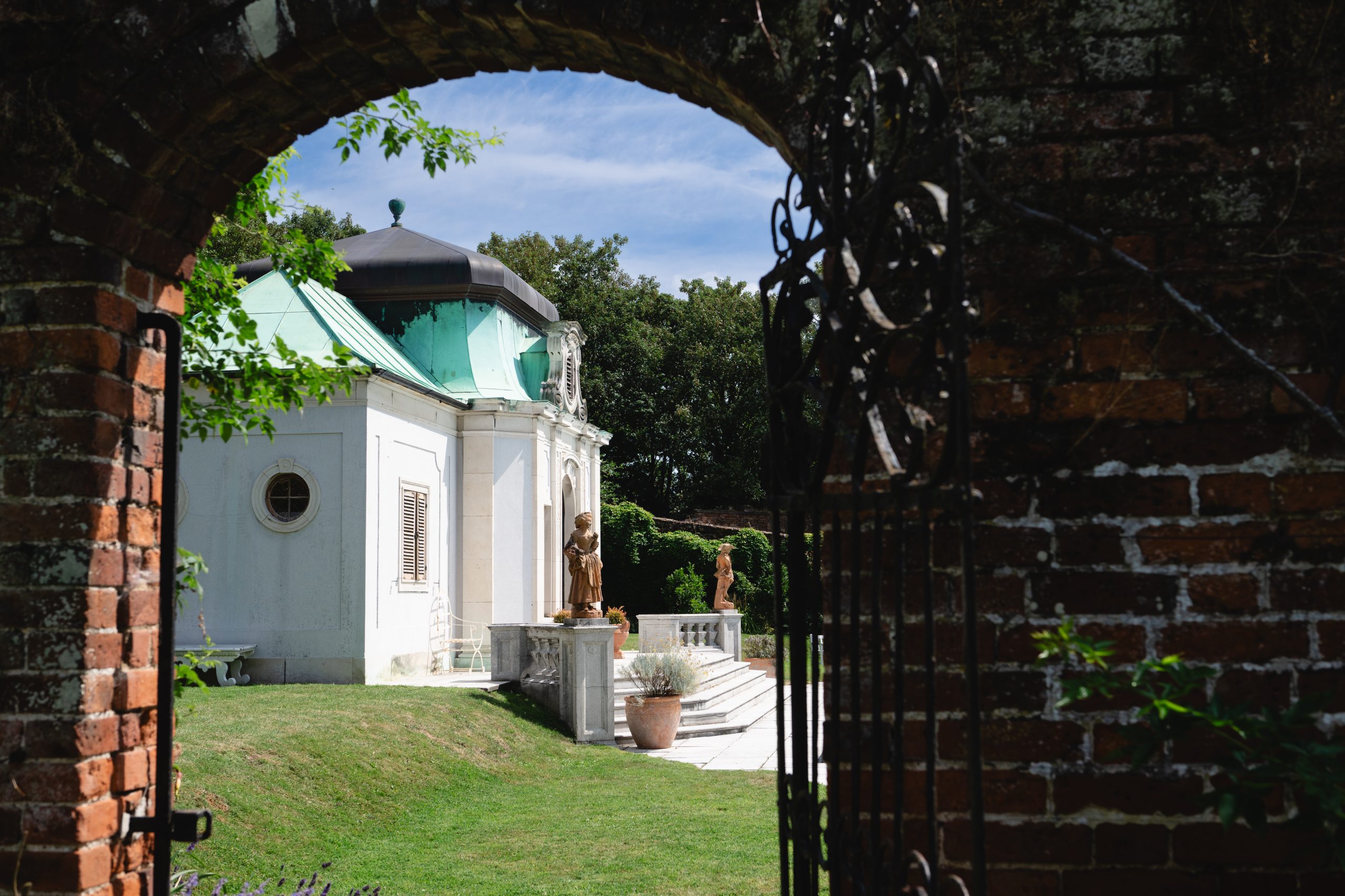
The Golden Age shimmers unbroken at Biddesden, Wiltshire, built by Gen John Webb, veteran of Marlborough’s wars, in 1704–09. A famously handsome house, it was bought by the Hon Bryan Guinness in 1931. A first cousin of Lady Honor, Guinness was a businessman and farmer, as well as a writer, a Bright Young Thing and a patron of contemporary art. His pool was conceived as a ‘moat’ to a hill-top gazebo built to enjoy views over the Downs.
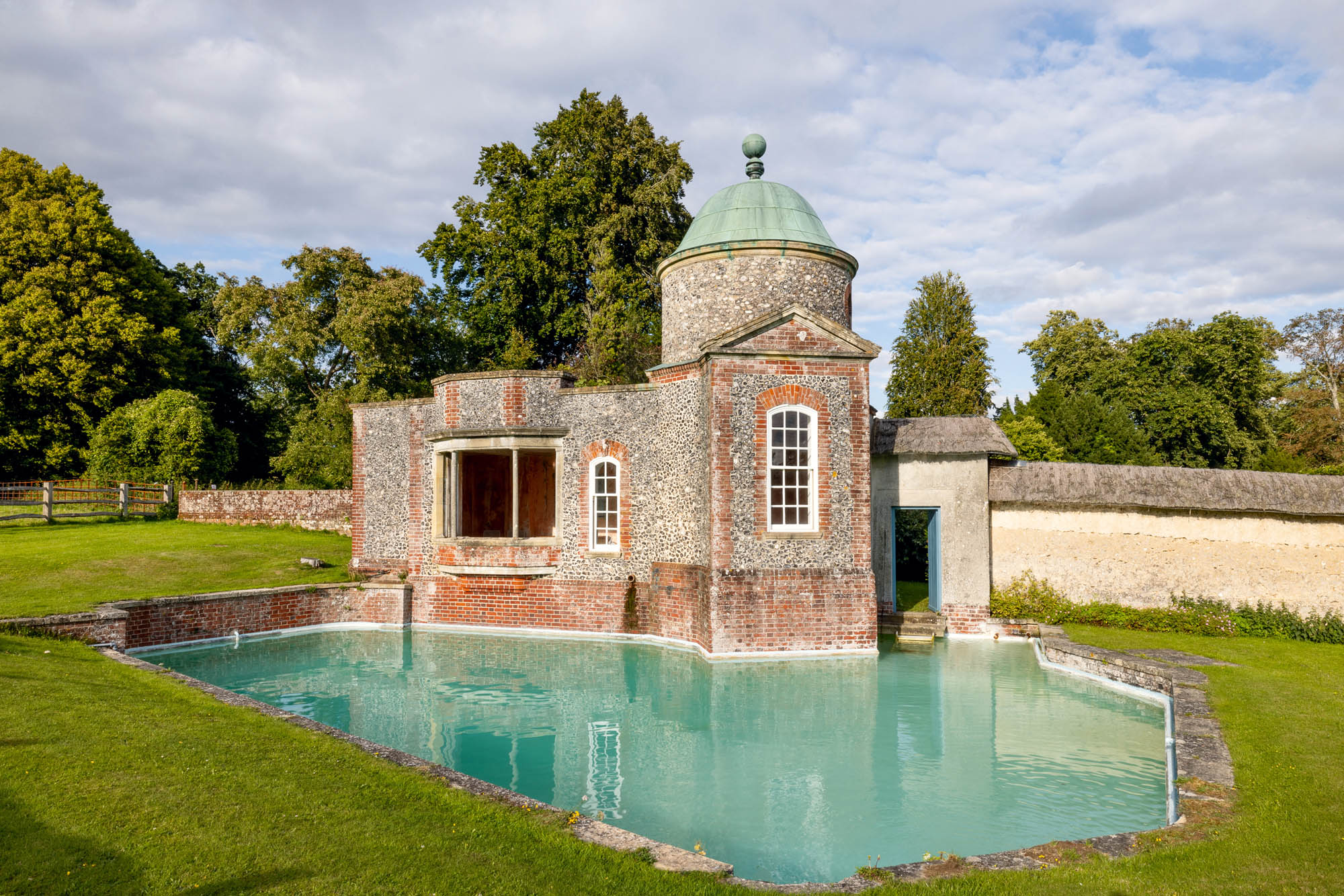
The architect was the Anglo-Irish George Kennedy (1882–1954), who also worked within the house. The walled garden is a climb up the hill from the house itself and beyond Gen Webb’s terraces. (Kennedy suggested a gazebo at each corner, but that was not taken up). The gazebo is beyond the walled garden, its copper dome glinting in the view beyond a giant female nude figure by Stephen Tomlin, the Bloomsbury sculptor who died in 1937. Through the door is another surprise: to the left extends an avenue for tender shrubs, formed by sculpted buttresses of yew inserted between the walls and receding into the distance as if part of a Modernist stage set.
Kennedy, later a Classics master at Gordonstoun in Scotland, designed extensions to institutions in a polite, even straitlaced period style. The Biddesden gazebo, in the local flint and brick, is different; its quizzical charm must be explained by the confident, playful personality of Guinness himself. It has a highly unusual plan, not quite a triangle, but with one façade to the garden and two more to the country beyond. A secret flight of steps leads to a flat roof where Guinness, a father of 11, could sunbathe and read in solitude.
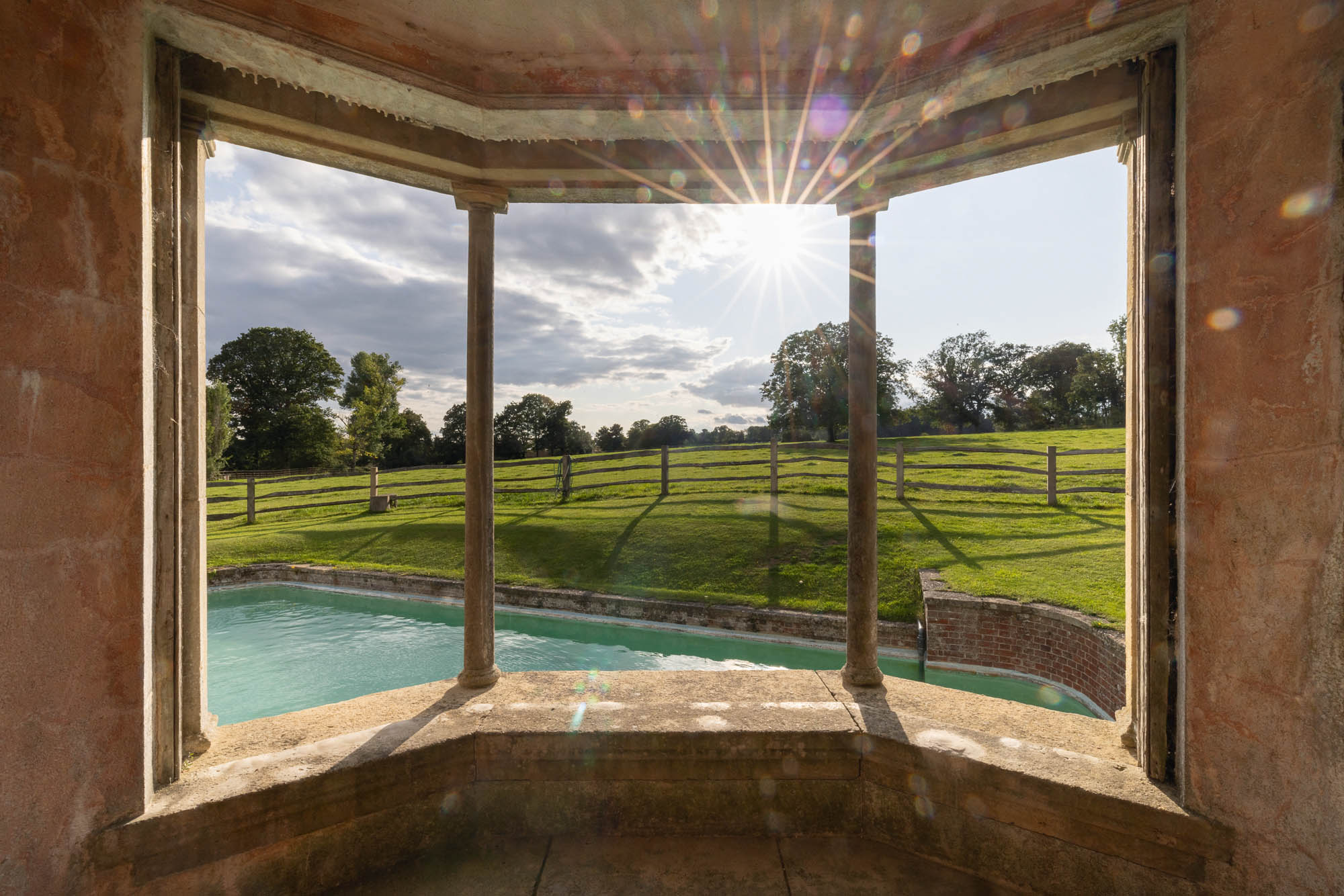
In the first room, a bay window frames a view of the Downs; opposite, a mural of a woman on a white horse was added in the 1950s by Roland Pym, the playful muralist who illustrated Guinness’s children’s books, including The Story of Catriona and the Grasshopper (1958). Steps ascend to a second room, below the dome, with its own window within a single-bay pedimented façade.
This was decorated with mosaics by Boris Anrep (1883–1969), a Russian emigrée who had joined the Bloomsbury Group and whose most public commission is the mosaic vestibule of the National Gallery.
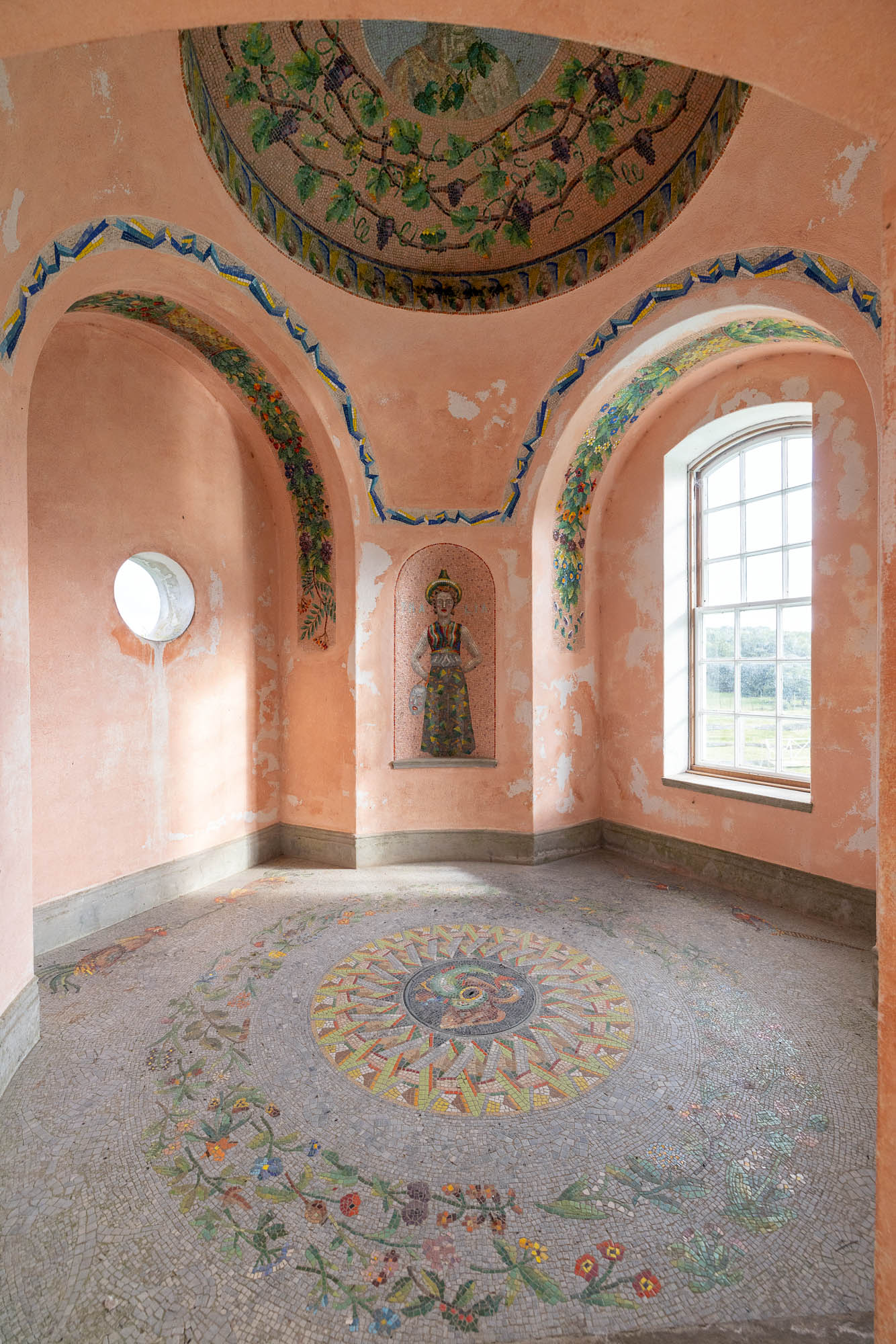
Here, Bacchus is garlanded in the dome and, in wall niches, the three Muses Erato, Thalia and Clio, are framed by lustrous flower garlands. The dome is outlined by a lovely detail of waves of water. Never have I changed into trunks in a room of such beauty.
The pool is entered by stepping out of the gazebo and back in through a door in the cob wall, or by jumping from the bay window, which I did, as all those Guinness children must have done. This is a pool for play and adventure and the water still ripples with the joy it has given to generations.

-
 Designer's Room: A solid oak French kitchen that's been cleverly engineered to last
Designer's Room: A solid oak French kitchen that's been cleverly engineered to lastKitchen and joinery specialist Artichoke had several clever tricks to deal with the fact that natural wood expands and contracts.
By Amelia Thorpe
-
 Chocolate eggs, bunnies and the Resurrection: Country Life Quiz of the Day, April 18, 2025
Chocolate eggs, bunnies and the Resurrection: Country Life Quiz of the Day, April 18, 2025Friday's quiz is an Easter special.
By James Fisher